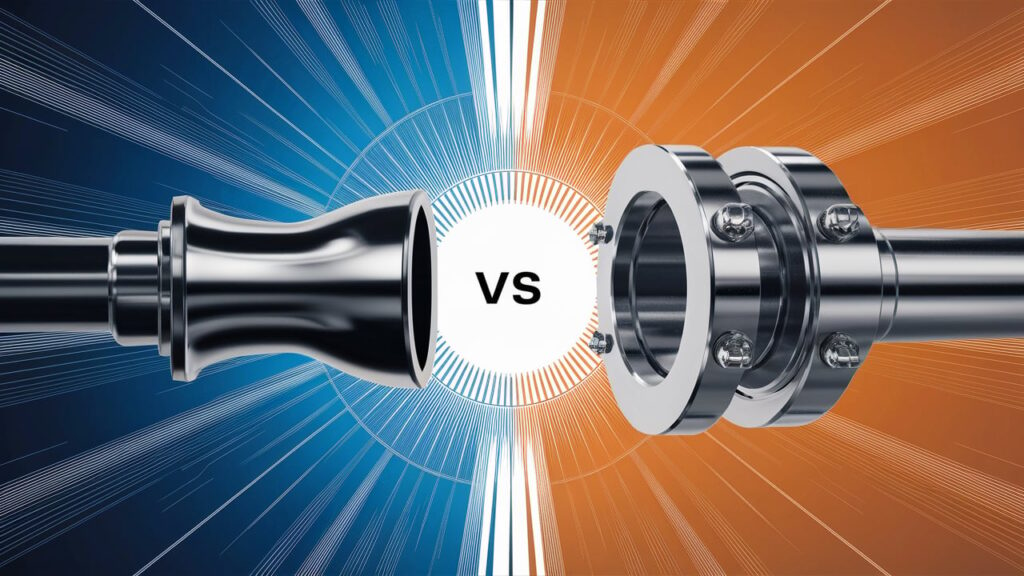Flanges and nozzles – you’ll come across both in industrial pipe systems. But what exactly is the difference between a nozzle and a flange?
Как профессионал поставщик распылительных форсунок, I often get asked this question. In this complete guide, I’ll explain everything you need to know about nozzles vs flanges.

What is a Nozzle?
Let’s start with nozzles.
A nozzle is a short projection with a bore that allows fluid flow in and out of pressure vessels, tanks, heat exchangers and other equipment. Nozzles facilitate the interconnection of process equipment for the smooth flow of liquids, gases and slurries.
Nozzles have standardized dimensions defined by international standards like ANSI/ASME and DIN. The key dimensions that define a nozzle are:
- Size – The nominal bore diameter
- Schedule – Wall thickness
- Projection – Distance the nozzle projects from the vessel surface
- Flange size and type – Most nozzles have flanges for connection
Nozzles are made from materials like carbon steel, stainless steel, chrome alloy and nickel alloy. Common nozzle types are:
- Weld neck nozzle – Short cylindrical neck with a flange welded on
- Integral nozzle – Nozzle and vessel made from a single piece
- Self-reinforced nozzle – Nozzle with enhanced wall thickness
Now let’s look at flanges.
What is a Flange?
A flange is a projecting rim or collar used to attach pipe and other equipment together using bolts. Flanges allow easy connectivity without welding.
Key dimensions that define a flange are:
- Nominal pipe size
- Flange face type – Flat, raised, ring, tongue & groove
- Pressure rating – 150#, 300#, 600# etc. Called flange class
- Outside diameter
- Bolt hole size and circle diameter
Flanges are connected using gaskets to ensure a leak-proof seal. Common flange types are:
- Weld neck – Bore matches pipe ID
- Slip on – Bore larger than pipe OD
- Socket weld – Threaded bore
- Lap joint – Flange overlaps pipe
- Blind – Solid cover flange
Both nozzles and flanges serve important roles in process piping projects. But how exactly are they different?
4 Key Differences Between Nozzles and Flanges
While nozzles and flanges often work together, they serve distinct purposes:
1. Leak Tightness
Flanges use gaskets to ensure a leak-tight seal when connected. Nozzles don’t require gaskets, and seal leaks through welding instead.
2. Connection Type
Flanges are used to quickly connect one section of pipe to another using bolts. Nozzles are welded permanently to vessels or heat exchangers.
3. Flow Purpose
Flanges simply connect – they don’t directly facilitate flow. Nozzles bring fluid in and out of process equipment like vessels and tanks.
4. Physical Attributes
Flanges have standardized dimensions defined by flange ratings. Nozzle dimensions aren’t standardized, and are application specific.
Understanding these key differences will help you optimize your piping and equipment interconnectivity.
Now, some engineers do use the terms “nozzle flange” or “flanged nozzle”. What do these hybrid terms mean?
Nozzle Flange and Flanged Nozzle
Certain types of nozzles have flanges welded on to their ends.
These configurations blur the lines between a nozzle and flange, so two interchangeable terms are used:
- Nozzle flange
- Flanged nozzle
These aren’t distinct types of equipment. Just nozzle and flange assemblies. The most common type is the raised face weld neck (RFWN) nozzle.
RFWNs allow easy, bolted connectivity while retaining a nozzle’s flow properties. The flange is welded on a short cylindrical neck that projects from the vessel surface.
Understanding subtle terminology like “nozzle flange” removes confusion surrounding equipment like nozzles and flanges.
And if you know how nozzles and flanges work independently, hybrid configs become easy to visualize.
Now I’ll answer some common questions engineers have around nozzles and flanges.
Frequently Asked Questions
Here are answers to some of the most frequently asked nozzle and flange questions I get:
Are Nozzles Necessary on Pressure Vessels?
Yes! Vessel nozzles enable flow in and out of the container. Without nozzles, vessel internals can’t interconnect with other process equipment.
Can Flanges Leak?
Yes, flange leaks are common if gaskets aren’t properly tightened. Always use torque control when connecting flanged equipment to prevent leaks.
Will a Higher Flange Rating Handle More Pressure?
Yes, within limits. A 300# flange can handle almost twice the internal pressure of a 150# flange. But higher ratings have lower pressure tolerances.
Can Nozzles Replace Flanges in Piping?
No. Because they permanently weld to equipment, nozzles can’t provide the detachability of flanged pipe connections. They serve very different purposes.
I hope this guide has helped explain the difference between nozzles and flanges in clear terms. Understanding how process equipment interconnects is vital for every engineer.
Let me know in the comments if you have any other nozzle or flange questions! I’m always happy to chat more about process piping equipment and terminologies.
